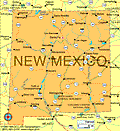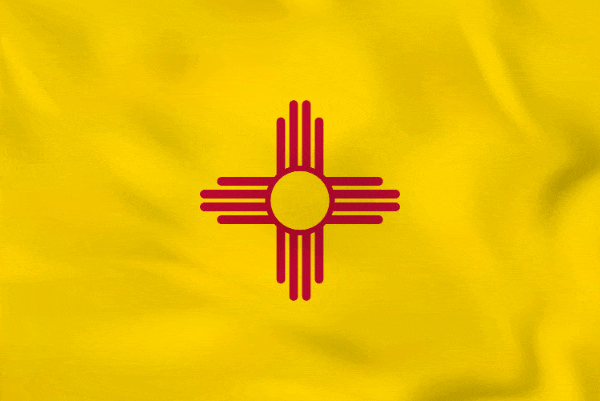Read this profile of New Mexico to learn about the state's history, points of interest, and government. Also find interesting facts about each state, including the state's motto, symbols, and when it entered the union.
 History Francisco Vásquez de Coronado, a Spanish explorer searching for gold, traveled the region that became New Mexico in 1540-1542. In 1598 the first Spanish settlement was established on the Rio Grande River by Juan de Onate; in 1610 Santa Fe was founded and made the capital of New Mexico. The U.S. acquired most of New Mexico in 1848, as a result of the Mexican War, and the remainder in the 1853 Gadsden Purchase. Union troops captured the territory from the Confederates during the Civil War. With the surrender of Geronimo in 1886, the Apache Wars and most of the Indian conflicts in the area were ended. Since 1945, New Mexico has been a leader in energy research and development with extensive experiments conducted at Los Alamos Scientific Laboratory and Sandia Laboratories in the nuclear, solar, and geothermal areas. Minerals are the state's richest natural resource, and New Mexico is one of the U.S. leaders in output of uranium and potassium salts. Petroleum, natural gas, copper, gold, silver, zinc, lead, and molybdenum also contribute heavily to the state's income. The principal manufacturing industries include food products, chemicals, transportation equipment, lumber, electrical machinery, and stone-clay-glass products. More than two-thirds of New Mexico's farm income comes from livestock products, especially sheep. Cotton, pecans, and sorghum are the most important field crops. Corn, peanuts, beans, onions, chilies, and lettuce are also grown. Tourist attractions include the Carlsbad Caverns National Park, Inscription Rock at El Morro National Monument, the ruins at Fort Union, Billy the Kid mementos at Lincoln, the White Sands and Gila Cliff Dwellings National Monuments, Bandelier National Monument, and the Chaco Culture National Historical Park.
|





